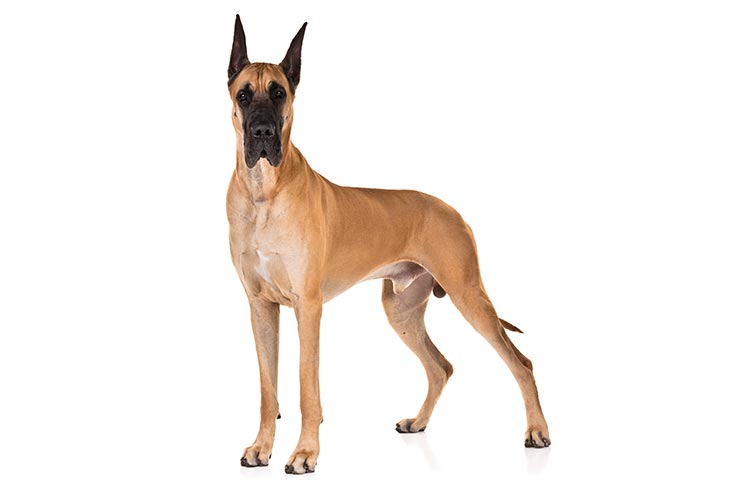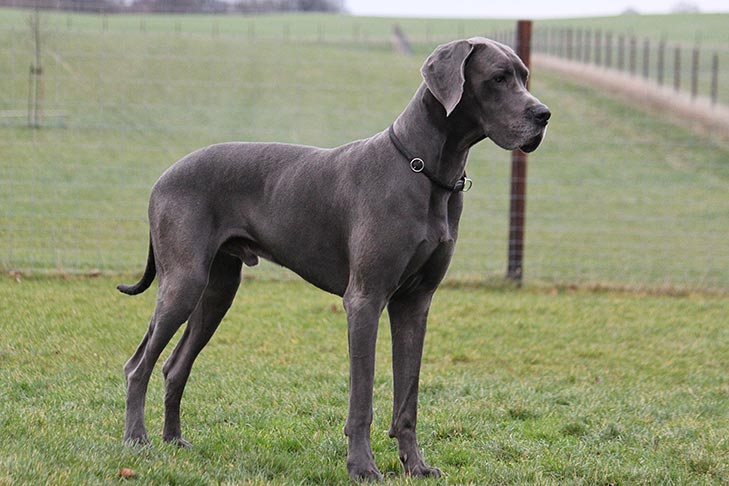John K Rosembert
 The Great Dane, also known as the German Mastiff or Apollo of dogs, a giant breed of German origin. The Great Dane descends from hunting dogs thought to have been around for more than 400 years, and is one of the largest breeds in the world. In the middle of the 16th century, the nobility in many countries of Europe imported strong, long-legged dogs from England, which were descended from crossbreeds between English Mastiffs and Irish Wolfhounds. They were also popular with the upper class for sport, as few other dogs could bring down a wild boar.
The Great Dane, also known as the German Mastiff or Apollo of dogs, a giant breed of German origin. The Great Dane descends from hunting dogs thought to have been around for more than 400 years, and is one of the largest breeds in the world. In the middle of the 16th century, the nobility in many countries of Europe imported strong, long-legged dogs from England, which were descended from crossbreeds between English Mastiffs and Irish Wolfhounds. They were also popular with the upper class for sport, as few other dogs could bring down a wild boar.
The Great Danes that were more like those we know today were developed in the 1800s. In 1880, the Germans banned the name “Great Dane” and called the breed “Deutsche Dogge,” which means German mastiff; however, the breed continues to be called Great Dane in English speaking countries.
The Great Dane’s large and imposing appearance belies its friendly nature. They are known for seeking physical affection with their owners, and the breed is often referred to as a “gentle giant”. They are moderately playful, affectionate and good with children. They will guard their home. Great Danes generally get along with other animals, particularly if raised with them, but some individuals in the breed can be aggressive with dogs they do not know.
There’s one unfortunate truth that Great Dane lovers must come to grips with — this giant breed doesn’t have a long lifespan. Danes don’t fully mature until about the age of 3, but while a smaller dog is middle-aged at 10, that’s very old age in the Dane.
 Here we gather most common disease of the Great Dane;
Here we gather most common disease of the Great Dane;
Gastric Torsion _ Better known as bloat, gastric torsion occurs when the stomach twists, causing the abdomen to swell and stopping blood circulation. Bloat is a red-alert emergency, as the dog dies painfully within hours without surgical intervention. It’s the primary killer of Great Danes, and while other deep-chested breeds are at risk, the level of risk is highest for this breed, according to the Great Dane Club of America.
Heart Disease _ Cardiomyopathy, a heart muscle disease, often plagues Danes. Likely genetic in origin, dilated cardiomyopathy cause heart enlargement. Unfortunately, the initial symptom may be the dog’s death, but if your dog develops difficulty breathing, take him to the vet. Danes are also subject to tricuspid valve disease, a congenital problem in which a heart valve doesn’t work properly. Mitral valve disease may cause the left side of the heart to fail.
Hip Dysplasia _ Hip dysplasia often manifests itself in larger dog breeds and Great Danes fit the bill. Hip dysplasia is a chronic condition in which the head of the femur bone doesn’t fit into the hip socket correctly. If you adopt a Great Dane from a breeder, ask for radiographs of the parents’ hips and speak to them about the parents’ health history.
Hypothyroidism _ This lack of thyroid hormone causes weakness, lethargy, hair loss and other subtle symptoms. If you feel your Dane is just not quite right but can’t put your finger on it, hypothyroidism could be the cause. Take him to the vet for testing. There’s good news for this medical problem — treatment consists of thyroid supplementation.
Sources:
https://pets.thenest.com/wobbler-disease-doberman-pinscher-5075.html
https://www.hillspet.com/dog-care/dog-breeds/great-dane#:~:text=The%20Dane%20is%20German%20in,guardians%20of%20estates%20and%20carriages
Photo Credit: https://www.akc.org/dog-breeds/great-dane/

